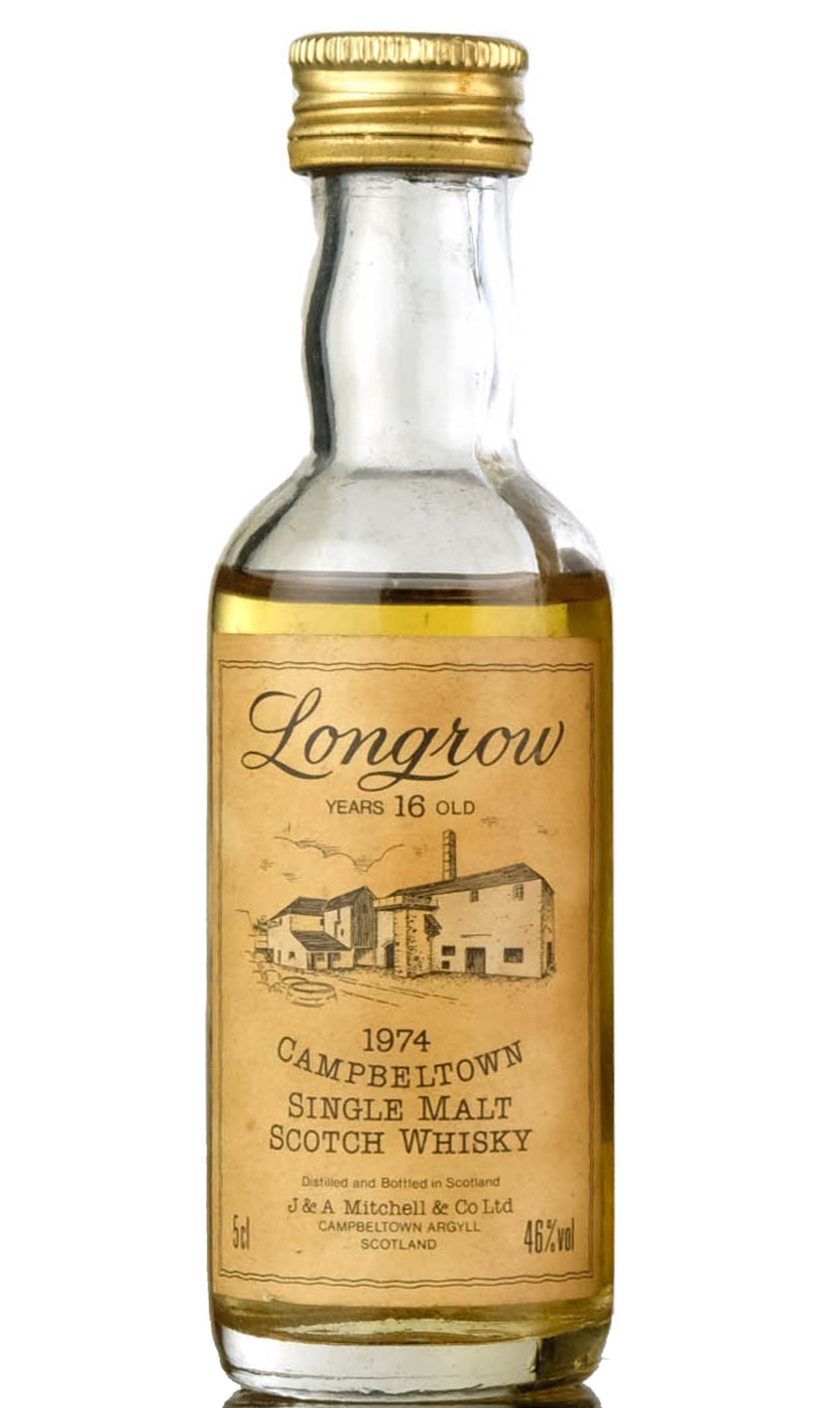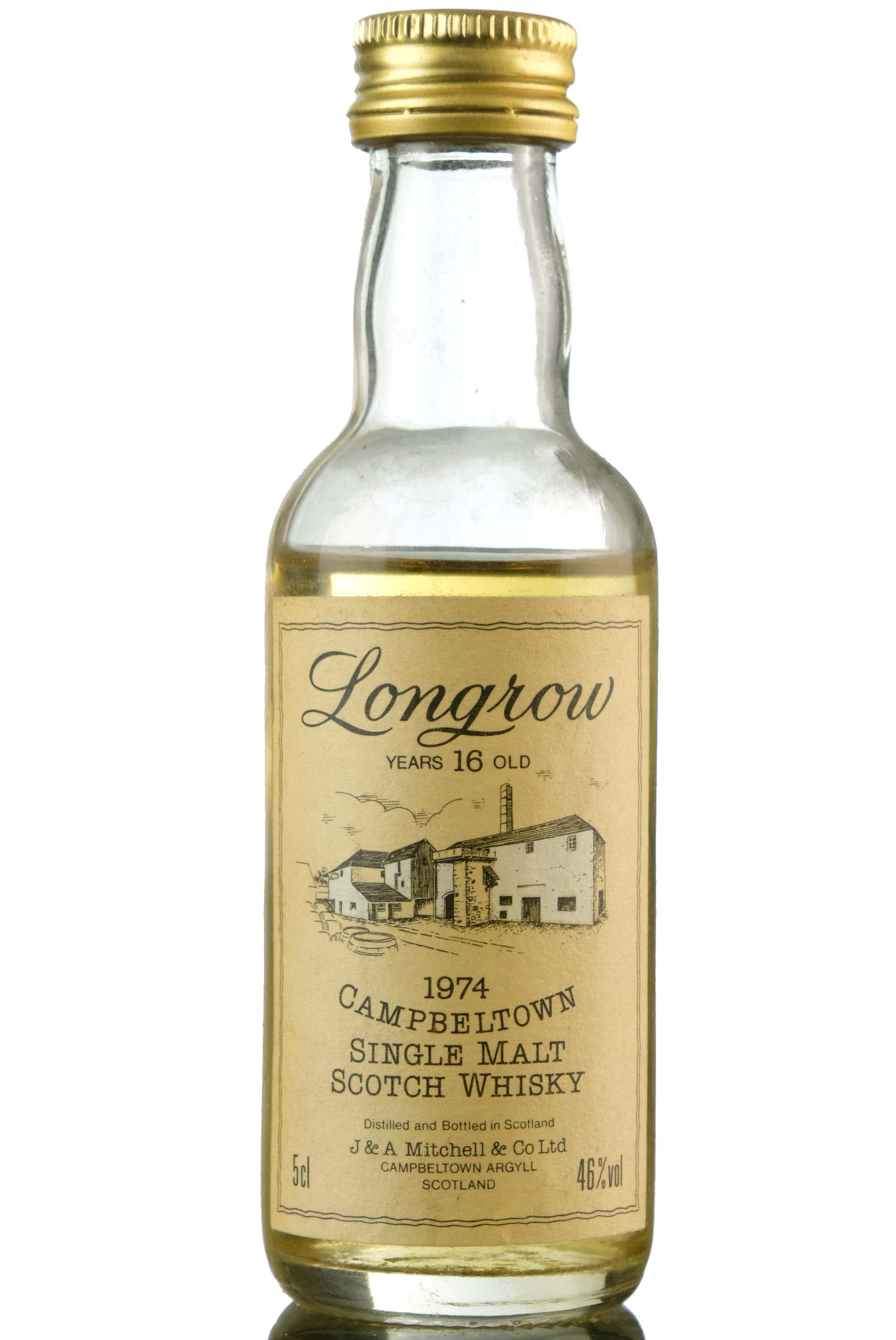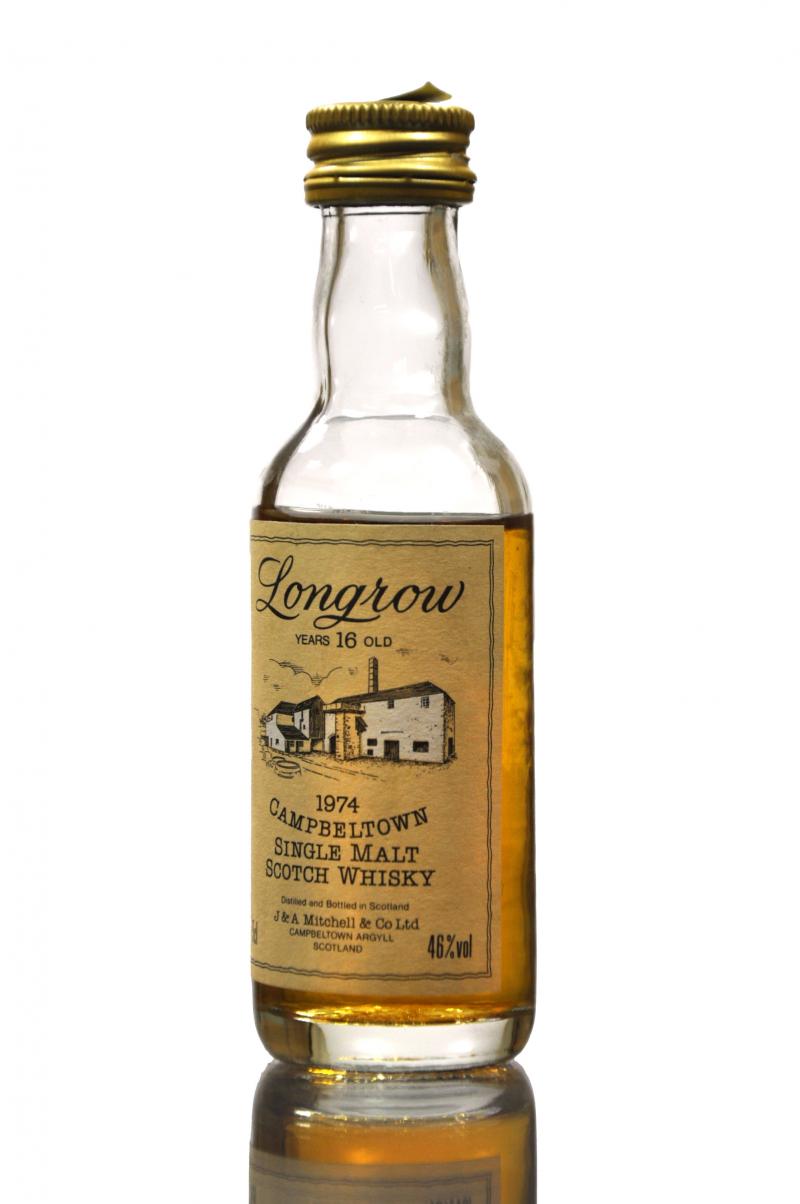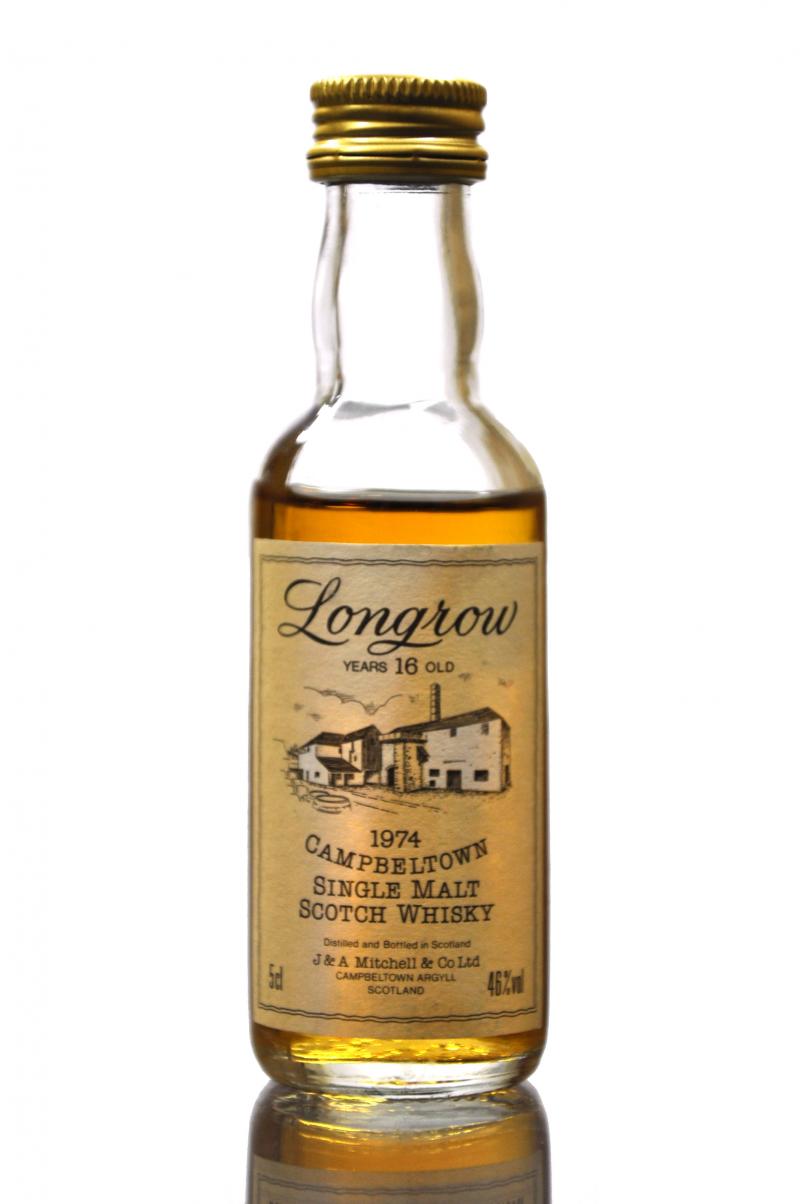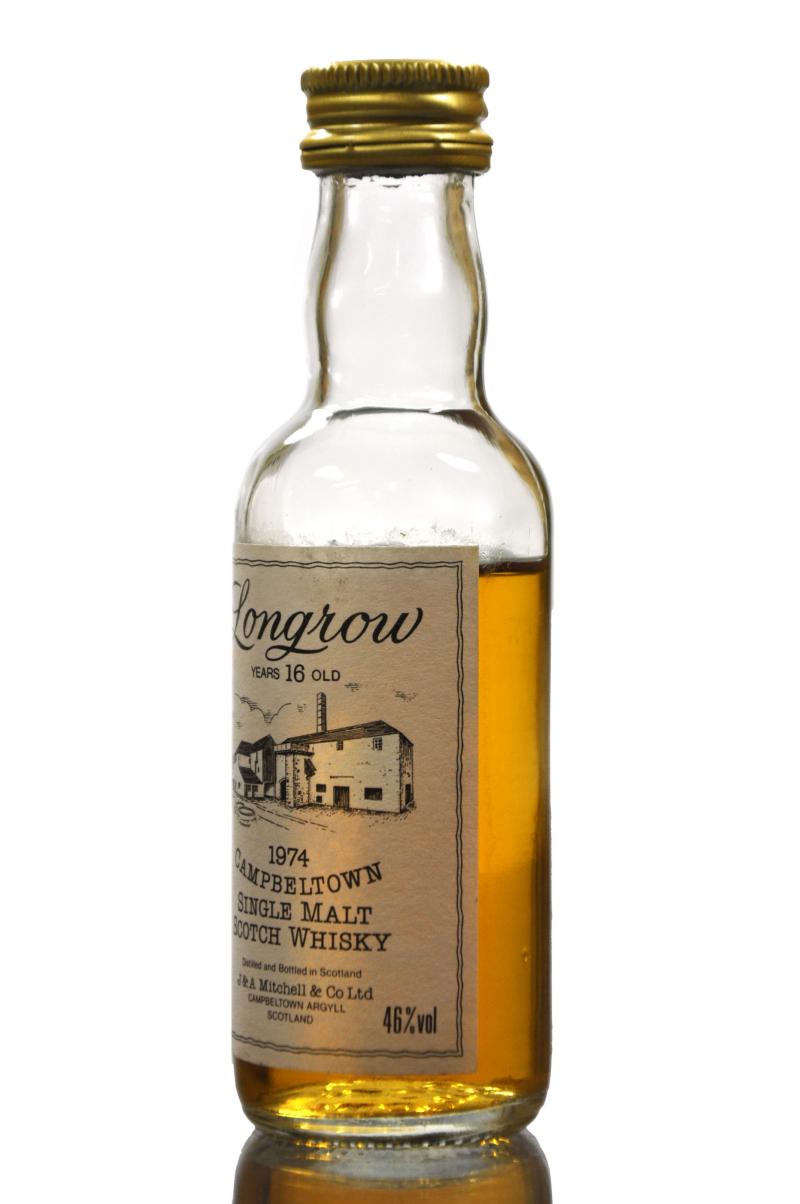Total Lots Sold:
10
View Lots
Do you have this bottle for sale?
SELL IT TODAYHAMMER PRICE OVER TIME
This graph displays data solely from Whisky-Online Auctions past sales history. Please note the filling level of the liquid and the condition of an item can affect the price negatively, so please check individual Lot sales below if there's a sudden dip in the graph.
HAVE ONE FOR SALE?
Submit your details along with an image and a description of your bottle. We'll then be in touch with the best way to proceed.
WHY SELL WITH WHISKY-ONLINE AUCTIONS?
0% Sellers Commission
Free Collections Available
Over 30 Years In The Whisky Industry
Over 1,700 Five Star Trustpilot Reviews
We Sell The Rarest Whiskies Ever Bottled
Global Buying Audience Including Far East Buyers
Bespoke Auction Platform
Thousands Of Active Bidders
Large Database Of Newsletter Subscribers
Over 36k Social Media Followers
Longrow 1974 - 16 Year Old - Miniature
Longrow 1974. 16 Year Old. 5cl. 46%.
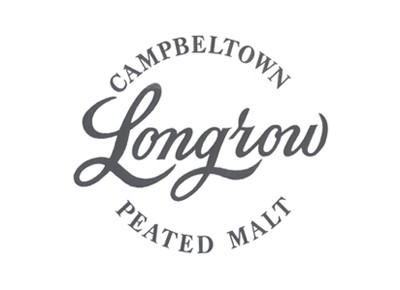
Longrow is the name given to the heavily-peated, double-distilled single malt whisky made at Springbank distillery in Campbeltown. The barley used to distil Longrow is peated to around 50ppm and production of Longrow is currently about 10% of Springbank’s output. Longrow was made at Springbank for the first time in 1973 and 1974, and these vintages are considered classics and fetch the highest prices at auction.
Longrow’s first standard bottling was the 10-year-old, which ran from 1985 until 2011; a popular 14-year-old was launched in 2004, followed by bottlings of Longrow aged in a variety of wine casks. The most popular of these is Longrow Red, which was first bottled in 2012, is usually aged between 10-14 years and receives an extended finish in red wine casks. 18-year-old and 21-year-old Longrows have also been bottled in recent years.

Distillery bottlings are, as the name suggests, bottled by or for the distillery from which the whisky has originated and are thus often referred to as Official Bottlings or OBs. Distillery bottlings are generally more desirable for collectors and usually fetch higher prices at auction than independent bottlings. They are officially-endorsed versions of the whisky from a particular distillery and are therefore considered the truest expression of the distillery’s character.
This ideal of the distillery character is regarded so seriously by the distilleries and brand owners that casks of whisky that are considered to vary too far from the archetype are frequently sold on to whisky brokers and independent bottlers. When this happens, it is often with the proviso that the distillery’s name is not allowed to be used when the cask is bottled for fear of diminishing or damaging the distillery’s character and status.



